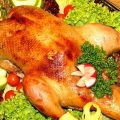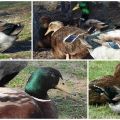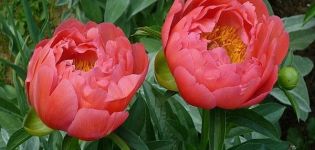Indo-duck and musk duck are the same or not, differences and which is better
Many farmers are wondering if the Indo-Duck and the Muscovy Duck are the same thing or not. In addition, it is not clear to which category the common duck should be classified. Obviously, these varieties have a lot in common, but there are also significant differences between them. Each of the types presented has its own advantages and disadvantages, which play an important role when choosing poultry for farming.
What is the Difference Between Indo-Ducks, Musk Ducks and Common Ducks
The Indo-duck, which is popularly called a musky duck, contrary to popular belief, is not a hybrid of a duck and a turkey. The bird belongs to the arboreal species, which distinguishes it from the standard representatives of the group, most of which are waterfowl. The name "Indo-duck" is an abbreviation of the phrase "Indian duck". This is due to the fact that Indian tribes were actively engaged in breeding mallards.
In the wild, it is found in South America and Mexico. These animals differ from an ordinary duck in the following ways:
- the body is elongated, wide, elongated head, short neck;
- red skin growths are present on the face;
- there is a crest on the head (it rises when frightened);
- specific gait - when moving, the mallard shakes its head back and forth.
By crossing female common ducks with Indo-ducks drakes, you can get a hybrid duck. Such offspring are called mulards. The similarity between musk ducks and mulard is very great.

Which is better to choose
Compared to common ducks, musky mallards have several advantages:
- Endurance - easily tolerate low temperatures. The room where the ducks are kept does not need to be heated. It is important that the floor is always dry in cold weather.
- No reservoir required.
- Strong immunity to viral infections.
- It is easy to distinguish a drake from a female (the size of the latter is half the size).
- Muscovy ducks are exemplary hens: they patiently incubate their eggs, do not leave the nest, and take care of the offspring.
- Birds eat little, while common mallards are constantly hungry. Favorite food - earthworms and insects.
- The meat has better qualities than regular ducks. The dietary and at the same time nutritious product obtained from Indo-women is much tastier, more tender, does not emit a specific smell. The proportion of muscle mass in meat is 43-48%.
- The bird rushes well. The eggs are edible. At the same time, eggs of a common mallard are not suitable for eating due to their low taste.
- The Indo-woman does not make noise, unlike its waterfowl relatives. The exception is the hissing of a drake, which is why sometimes these birds are called mute birds.
- Has a friendly disposition.
- Cleanliness.
In addition to its advantages, the musk duck has a number of disadvantages that must be considered when choosing:
- The bird grows one and a half times longer than an ordinary duck (but it reaches a larger size).
- Long incubation period - more than a month.
- Birds are susceptible to shiny things, so they can easily swallow a dangerous object (nail, wire, screw, glass).
- They do not tolerate dirt, therefore, in the room where the bird is kept, you need to regularly change the bedding.
- They do not tolerate dampness.
- Indo-ducks fly fast and high, so they need to clip their wings. Otherwise, they will simply fly away from the yard.
- They do not tolerate the neighborhood of other birds. Therefore, they have to be kept separate from the rest.
Muscovy duck is the third name for Indo-duck. Moreover, these birds do not belong to standard mallards. Also, breeders have bred hybrids obtained from representatives of both varieties - mulards. Compared to classic ducks, musky ducks have a number of advantages that distinguish them favorably against the background of other relatives.











